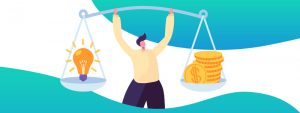An Information Memorandum (or Investment Memorandum, (IM)) is the most commonly used disclosure document to support private company fundraising in Australia. A comprehensive and well structured IM can enhance fundraising efforts, while a poor IM can have the opposite effect.
The regulatory framework
Fundraising in Australia is subject to the provisions of the Corporations Act, which is governed by ASIC.
- A sale or offer of securities (usually shares) requires a disclosure document (Product Disclosure Statement or Prospectus) to be produced and approved by ASIC, unless subject to a specific exemption. The main exemptions are;
- A “small scale offering” which is limited to 20 issues or sales (of securities) in 12 months up to a maximum $2m – known as a “Personal Offer”
- Issues or sales to sophisticated and professional investors
The majority of private company and particularly startup fundraising is conducted under these exceptions, or in terms of the Crowd Sourced Funding (CSF) provisions of the Corporations Act (see our separate Article on Equity Crowdfunding).
As most fundraising is conducted under a Corporations Act exemption, there is no prescribed offer document required, although any offer must still meet common law requirements and the provisions of the Corporations Act which deal with misleading and deceptive conduct
What is a Information Memorandum?
An Information Memorandum is a comprehensive description of all aspects of the business and the fundraising proposal. It is intended to provide all the information needed by an investor to make a fully informed decision in a positive and appealing way. A typical IM may be 30 to 50 pages in length.
The contents of an IM are not prescribed (unlike a Prospectus for example) so the contents will vary for each proposal.
At a minimum however the following topics are usually covered;
Executive Overview / Summary
A concise summary of the business and the proposal.
The Business
A comprehensive description of the business including the Problem being solved, the Solution, the business model (ie how the business makes money), key achievements, traction gained and any relevant background (like previous companies founded).
The Company
The corporate legal structure, how / where IP is held, the cap table showing existing shareholders and outstanding instruments, funding history, investment to date.
The Product / Service
A detailed description of the product / service – how it is originated / manufactured, cost to produce / serve, product range, facilities or outlets, how the product is delivered and distributed, pricing.
Team
Founders and their experience, key executives, incentives, organisation structure.
Market
Addressable market size and description, the target market, customer profile, trends affecting the market, growth strategy, geographic markets, competitors, sales traction, sales targets.
SWOT analysis
A SWOT (Strengths, Weaknesses, Opportunities, Threats) or similar competitive analysis is sometimes included. It is helpful in providing a succinct summary of the strategic factors affecting the business.
Financial forecast
A 3 to 5 year forecast of the Balance Sheet, Profit & Loss Statement and cash flow, with supplemental information to support Salary / Wage costs, Capital / Development costs and any other substantial items.
Offer details
The offer being made – no. of shares, type of shares (i.e. Ordinary, Preference), the % ownership available (in other words the proposed valuation), any other terms or conditions.
Risk Analysis / Statement of Risks
A description of the potential risks facing the business – for example reliance on key staff, competitive threats, legislative or regulatory changes etc.
A few pointers towards a good IM
- All statements made in an IM should be open, transparent and honest. Negative factors and challenges affecting the business should be disclosed in addition to the positives;
- Data used in an IM should be current and relevant;
- An IM should have a clear and consistent “thread” – for example, if strong early growth is forecast it should be supported by a marketing and promotional effort;
- While the IM is in part a marketing document, it is important to be objective and have well founded arguments to support the predicted development and growth of the business;
- In terms of presentation, an IM should be clear, uncluttered and professional. While it should be visually appealing, it should not emphasise presentation over substance.
If you need help with developing an effective Information Memorandum, reach out to the seasoned team at Fullstack who can help with outsourced CFO services.
Was this article helpful?
Related Posts
- Preference Shares
Preference Shares are a separate class of share and have features which can be used…
- Slicing the Pie – How ESS and ESOP arrangements work
The performance of your team can make or break your chances of success. Incentive better…
- Equity Crowdfunding in Australia
Crowdfunding is making some big waves in recent times - we cover why many founders…
- Small Business Grant
Been hiring recently? You’ll be pleased to note that the NSW government is keen to…

















